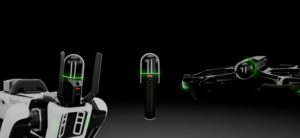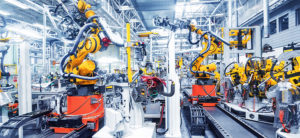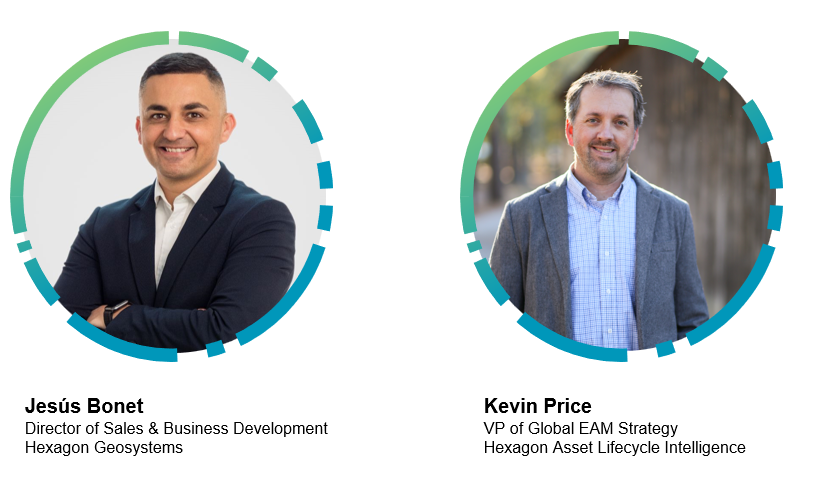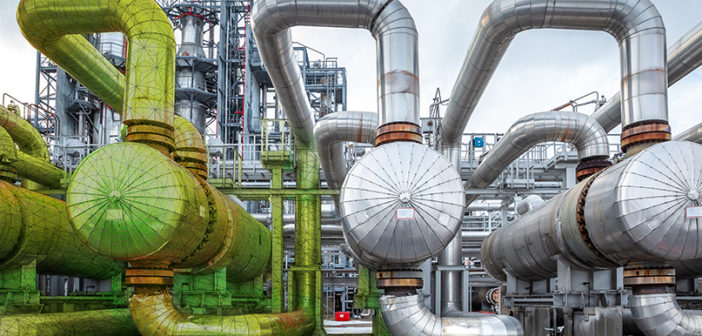A common misconception is that Hexagon’s Smart Digital Reality is just for the construction industry, but that simply isn’t true. You’ve probably heard the expression ‘work smarter, not harder’. That’s what Hexagon’s Smart Digital Reality provides for workflow processes that benefit from automation, including enterprise asset management. It puts data to work, which is useful for operations and maintenance within plants and industrial facilities.
Why Smart Digital Reality? And why now?
 Over the past 20 years, reality capture technology has improved considerably. In the past, the key challenges focused on the equipment as it was highly technical, heavy, and wired, offered slow data capture and processing, and was expensive and exclusive.
Over the past 20 years, reality capture technology has improved considerably. In the past, the key challenges focused on the equipment as it was highly technical, heavy, and wired, offered slow data capture and processing, and was expensive and exclusive.
Now some alternatives are changing the landscape and increasing the number of use cases for reality capture, and this trend is likely to continue. Over the next five to 10 years, the range of collaborative technologies that will work together to enhance the process and overall results (think digital reality capture, Building Information Modelling (BIM) and digital twin technology) will increase exponentially. The advances we can expect will be transformational. They won’t just change the industry; they’ll change life as we know it.
But while the original challenges have been overcome, new challenges have arisen. Today’s challenges centre on efficiency, fast data processing, autonomy and accuracy. With these challenges in mind, Hexagon is bridging the divide between the physical and digital worlds so that the Smart Digital Reality can be fully utilised.
This means that efficient and accurate data capture to create digital twins will become widely adopted instead of being a niche concept embraced within specific industries. Processes like this are beneficial for enterprise asset management because the benefits and the possibilities are limitless. Allow us to explain a little more…
Let’s fast forward: Welcome to the future
 Many products already available have the capabilities to turn an ordinary industrial plant into a super-efficient and fully optimised operation, with enhanced workflows. Ultimately, smart digital reality capture is a collaborative approach when correctly implemented.
Many products already available have the capabilities to turn an ordinary industrial plant into a super-efficient and fully optimised operation, with enhanced workflows. Ultimately, smart digital reality capture is a collaborative approach when correctly implemented.
Let’s set the scene: we’re looking at a large industrial plant, but we’re not standing in the plant; we’re working remotely. We’re comparing real-time data collected via collaborative autonomous technologies.
For instance, Leica Geosystems’ BLK Autonomy portfolio brings together multiple elements that result in robotic and platform autonomy (no human intervention). This includes GrandSLAM technology and real-time laser scanning for remote monitoring coupled with Artificial Intelligence (AI) and Machine Learning (ML) data processing, which means efficient data capture and streamlined workflow processes to optimise operations.
There are several cutting-edge products available on the market that already offer these capabilities. For instance, the Leica BLK2FLY is a user-friendly autonomous flying laser scanner that easily captures images above the sky. This includes exteriors, interiors, structures, and environments to create 3D point clouds while flying. It’s designed to work in harmony with other autonomous technologies.
An example of this is the Leica BLK ARC Autonomous Laser Scanning Module for robotic carriers. In industrial plants of the future, the BLK ARC will scan autonomously to ensure everything is working as it should be. In addition, the data captured can be used to produce 3D digital twins to enhance remote monitoring programmes. As with all future autonomous technology, the BLK ARC embraces complementary technologies; LiDAR SLAM, Visual SLAM, and an Inertial Measurement Unit (IMU) to support autonomous navigation through complex plant environments.
But there’s also the BLK2GO Handheld Imaging Laser Scanner, which can be used to create initial data points and 3D digital visualisations as this piece of kit is lightweight, agile and fast. It captures and processes data incredibly fast, is accessible in terms of pricing, and has user-friendly features. This makes it the ideal tool to lay the foundations for autonomous processes. Or the Leica RTC360 3D Laser Scanner that enables users to create accurate 3D representations of the site environment quickly. It’s the ideal tool for project managers dealing with complex sites as it is easy to use, portable, and accurate. The advantage of being able to access accurate real-time data for those on or off-site is that they can make better-informed decisions, faster.
Why use autonomous technology and processes in industrial plants?
 It’s a form of proactive enterprise asset management. We can compare data from the digital twin with real-time data to assess if there are issues within the facility. Specifically, we can look at the plant equipment to determine what maintenance (if any) is required. And this is just the beginning.
It’s a form of proactive enterprise asset management. We can compare data from the digital twin with real-time data to assess if there are issues within the facility. Specifically, we can look at the plant equipment to determine what maintenance (if any) is required. And this is just the beginning.
How do we see the future? In terms of enterprise asset management, we see integration, where asset visualisation and predictive maintenance are key. For example, suppose there was a scenario where a pressure sensor stopped working during autonomous scanning. Instead of waiting for the equipment to fail (resulting in expensive unplanned downtime and processing delays), the BLK ARC could determine which elements needed replacing, how urgent the replacement is, and whether there is any stock of the item. If there isn’t, it could send the item code to the 3D printer to produce it in-house. This would this prevent reliance on third parties (for maintenance, repairs, and parts) and increase the supply chain’s resilience.
Smart reality capture isn’t just about asset visualisation, it’s also about integrating complementary technologies seamlessly so the entire operation is optimised. An example of next-level integration is the implementation of HxGN EAM (formerly Infor EAM) to streamline workflows further.
 HxGN EAM enables organisations to overcome critical asset performance challenges. It offers a range of state-of-the-art capabilities, including Asset Performance Management (APM), which harnesses the power of automation and connected devices through the Internet of Things (IoT) as well as AI and ML.
HxGN EAM enables organisations to overcome critical asset performance challenges. It offers a range of state-of-the-art capabilities, including Asset Performance Management (APM), which harnesses the power of automation and connected devices through the Internet of Things (IoT) as well as AI and ML.
 EAM Constraint Optimizer also leverages data science and ML to streamline the decision-making process around complex business challenges. Constraint Optimizer allows you to utilise your unique business data to increase the efficiency of scheduling and optimise investment planning. In addition, EAM Digital Work mobile applications allow you to tailor the mobile experience by user type, helping to improve the accuracy of data capture and boosting efficiency across work execution and asset management processes.
EAM Constraint Optimizer also leverages data science and ML to streamline the decision-making process around complex business challenges. Constraint Optimizer allows you to utilise your unique business data to increase the efficiency of scheduling and optimise investment planning. In addition, EAM Digital Work mobile applications allow you to tailor the mobile experience by user type, helping to improve the accuracy of data capture and boosting efficiency across work execution and asset management processes.
When all the strands of HxGN EAM come together, they offer business leaders a comprehensive solution that leverages asset visualisation and predictive maintenance, at scale.
So, what does all this mean for the future?
Not all organisations that exist today will exist tomorrow. Only the most resilient and agile will adapt to the technological shifts we’re already witnessing. Those who cannot optimise their processes may get left behind. Their supply chain won’t be resilient or reliable, their customer service won’t be good enough, and they won’t be able to keep pace with demand.
That’s where Hexagon’s Smart Digital Reality comes in. It is helping organisations to future-proof their operations. To enhance their efficiency, sustainability, safety, and productivity. Enterprise asset management systems are already streamlining operations, and with smart digital reality capture, the future will be even more efficient, and we can’t wait.















